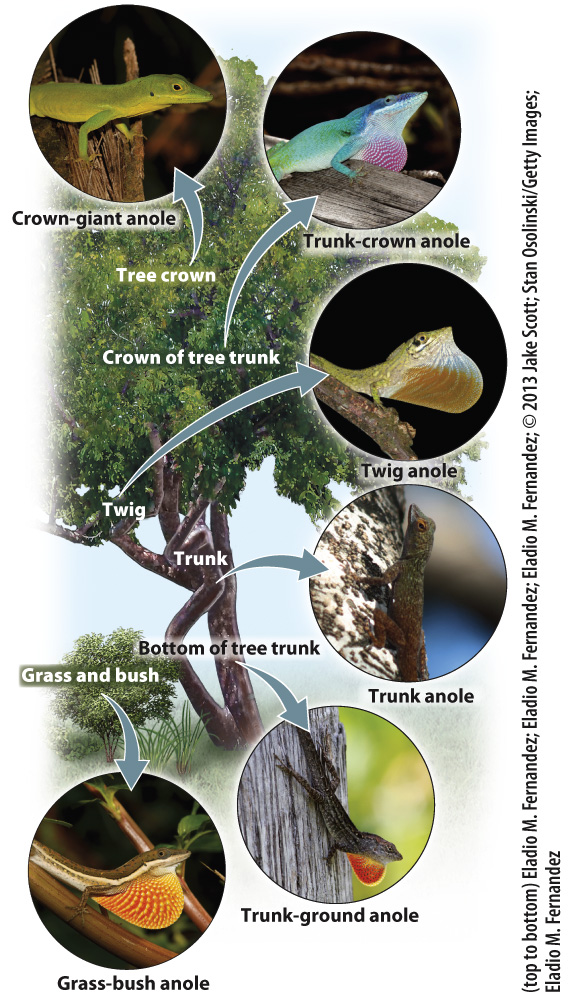CASE 8 BIODIVERSITY HOTSPOTS: RAIN FORESTS AND CORAL REEFS
How do islands promote species diversification?

Anolis lizards provide a classic and dramatic example of evolutionary diversification on the island of Hispaniola, where many dozens of species of closely related species coexist. Phylogenies suggest that Anolis lizards colonized Hispaniola in five or six separate events, but the dozens of species present today indicate marked evolutionary diversification after colonization.
All Anolis lizards feed on insects and other invertebrates, but species differ in how and where they search for prey. Some with long legs run on the ground, while others with shorter legs and long tails climb on vegetation. Still others are large and robust and live in the high canopies of trees. Altogether, Anolis lizards have evolved six different feeding strategies with corresponding morphological traits (Fig. 46.19).
All six types can coexist in one place because they hunt insects in different ways and in different parts of the vegetation. Careful research is revealing the pattern of population expansion and fragmentation, followed by natural selection within different subpopulations, that has resulted in the diversity observed on Hispaniola today. Through evolution and complex ecological interactions, then, habitat diversity can depart from the simple predictions of island biogeography. Nonetheless, the theory remains a powerful way of thinking about species diversity and an important consideration in conservation biology.